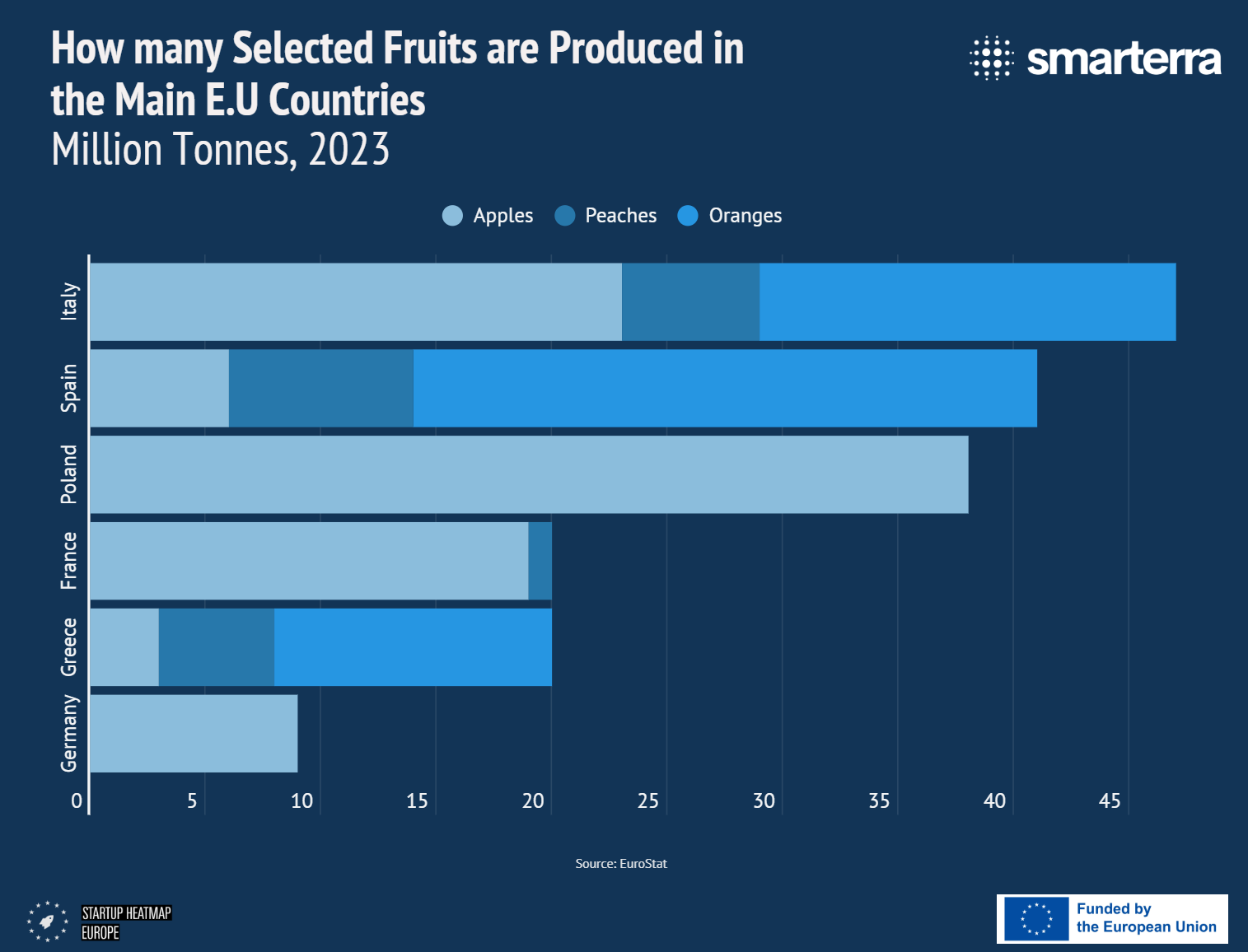Italy – Maybe Your Next Mango or Avocado Grows in Sicily?

Southern Italy is becoming an important hub for tropical fruit farming. With climate change altering agriculture worldwide, this region finds new opportunities to grow crops like mangoes and avocados. What was once a challenge for traditional crops is now an opportunity to diversify. Southern Italy is positioned to become Europe’s source of tropical fruit.
How Climate Change is Changing Agriculture
Rising temperatures in the Mediterranean are creating conditions where tropical fruits can grow. Warmer summers, milder winters, and longer growing seasons mean crops like mangoes and avocados are becoming viable. Unlike traditional crops like olives and wheat, tropical fruits are better suited to tolerate heat and drought—an important advantage as water shortages and heat waves become more frequent.
These fruits are also more resilient to new pests and diseases linked to climate shifts. By exploring these crops, Southern Italy’s agriculture can adapt to future challenges.
The Growth of Tropical Farming
Tropical farming in southern Italy has grown significantly. According to Coldiretti, mango farms in Italy increased from 10 hectares in 2004 to 1,200 hectares by 2023. Sicily has led this transformation, with regions like Palermo and Catania expanding mango and avocado production. Calabria has also seen avocado farming double in the last five years. This growth is reminiscent of the kiwi industry, where Italy now leads Europe with over 500,000 metric tons produced annually, accounting for 12% of global production. As of 2022, Italy’s agrifood exports reached €60 billion, with fruits and vegetables making up a major share. The sector contributes about 2% to Italy’s GDP, highlighting its economic importance.
Microclimates—areas with unique conditions—are crucial. Farmers are using these pockets of ideal temperature and soil to grow tropical fruits, making Southern Italy a serious competitor in Europe’s fruit market.

Italy’s position as a leading fruit producer in the EU, with a diverse agricultural portfolio. The country produced 23 million tonnes of apples, 6 million tonnes of peaches, and 18 million tonnes of oranges in 2024. This diversity sets Italy apart from countries like Poland, which focus predominantly on apples, or Spain, which excels in oranges. As climates warm and consumer preferences evolve, Italy’s adaptability and established expertise make it well-positioned to expand into tropical and subtropical fruit production, further solidifying its leadership in European agriculture.
Benefits for Farmers and the Environment
Southern Italy’s agrifood sector is worth billions yearly, with fruit and vegetable exports playing a big role. Adding tropical fruits to this portfolio opens up new markets and creates more opportunities for local farmers.
For consumers, locally grown tropical fruits mean fresher produce with a smaller carbon footprint than imports. For example, Sicilian avocados have a much lower environmental impact than those imported from countries thousands of kilometers away. Farmers also benefit from the high prices tropical fruits can command, providing a profitable alternative to traditional crops. Reduced transportation costs further increase the competitiveness of local produce.

Italy has emerged as the fastest-growing market for avocado consumption in Europe, with a remarkable 31% growth between 2015 and 2022, surpassing Spain, Poland, and Germany. This rapid increase in demand highlights shifting consumer preferences towards healthier diets and superfoods, positioning Italy as a key player in the European avocado market. As this trend continues, it presents significant opportunities for domestic production, import expansion, and investment in sustainable supply chains, reinforcing Italy’s role in the global avocado industry and economic growth in the agricultural sector.
Innovation in Agriculture
New technologies are making a big difference in adapting to climate change. Satellite data and AI, such as those used by Terroir from Space, help farmers identify the best locations for tropical crops. These tools improve efficiency and sustainability, enabling farmers to get the most out of their land.
Organizations like Smarterra.org connect farmers, researchers, and startups, helping to share knowledge and drive progress in tropical agriculture. Italy’s agritech sector is thriving, with over 700 startups developing solutions to boost productivity and tackle climate challenges. Campania’s PDO economy, for instance, grew by 9.4% in 2022, contributing €896 million to the agrifood sector and demonstrating the potential for specialized farming.
What’s Next?
Investment is essential to grow tropical farming further. Young farmers are ready to explore this opportunity but need financial support to expand and adopt advanced technologies. Public and private funding can help Southern Italy become a leader in tropical agriculture.
Policymakers can help by offering incentives for sustainable farming practices and creating a supportive environment for innovation. Cooperation between farmers, investors, and agrifood organizations will be key to maximizing this potential.
Southern Italy is well-placed to lead Europe in tropical fruit production. By focusing on these crops, the region can create new economic opportunities and meet the rising demand for tropical fruits. With support from tools like satellite technology and networks like Smarterra.org, the future looks bright for Southern Italy’s farmers. Now is the time to make this vision a reality, benefiting farmers, consumers, and the environment.
About the Author
Alessandro Saetta
Alessandro is the Representative of Terroir from Space, focused on developing a service to detect unexploited planting sites eligible to host vineyards. By exploiting EO data, several parameters associated with the soil and climate are obtained for different locations. By ingesting this information within our properly trained AI algorithm, we can detect and classify new planting sites that are long-term resilient to climate change.

